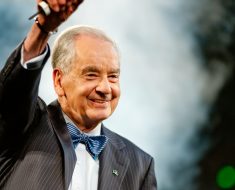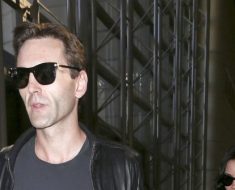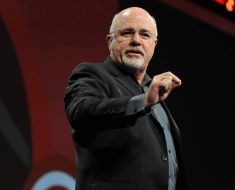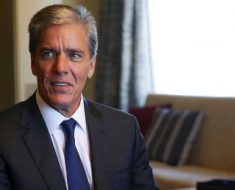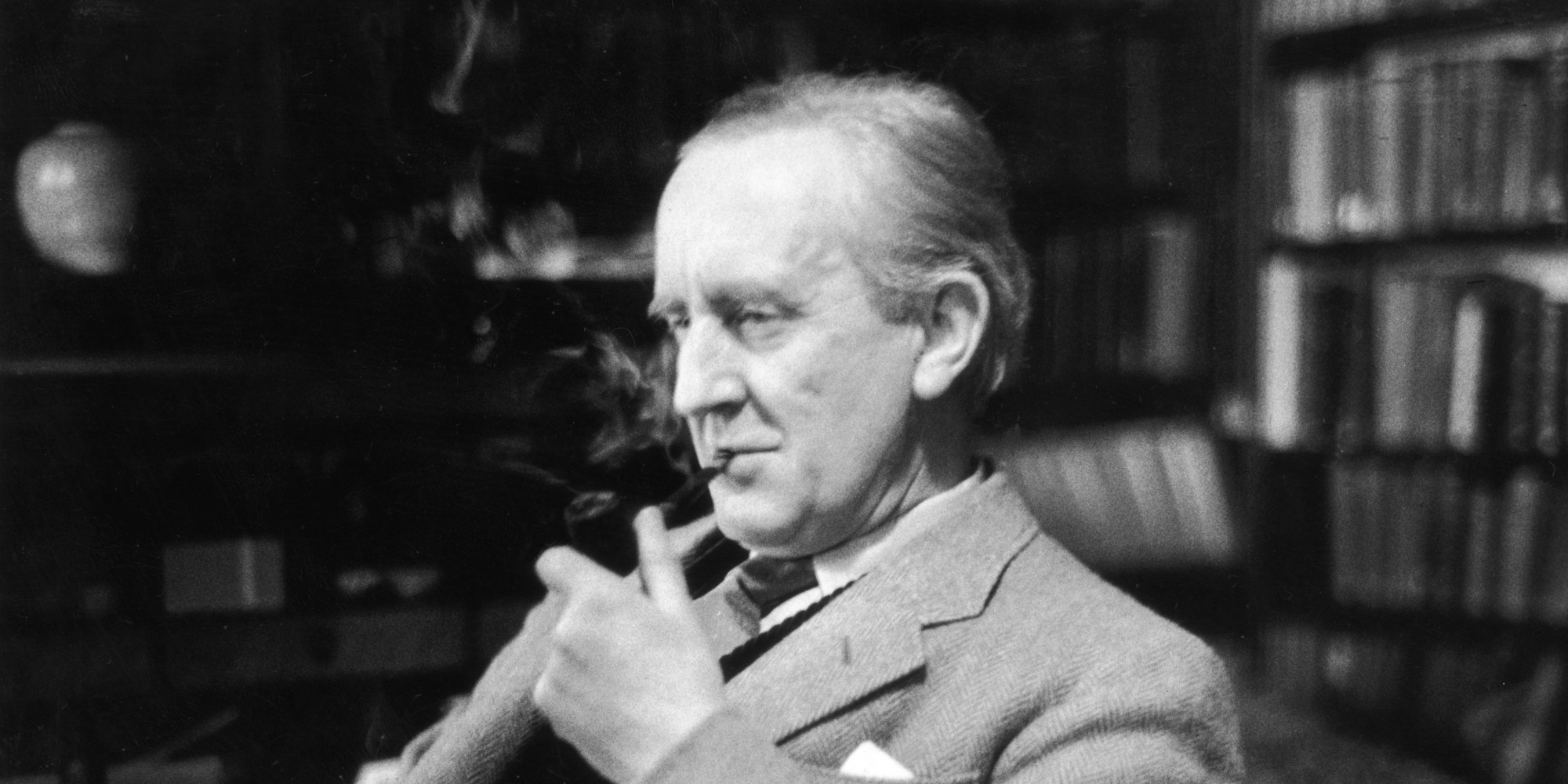
J. R. R. Tolkien net worth is $500 Million. Also know about J. R. R. Tolkien bio, salary, height, age weight, relationship and more …
J. R. R. Tolkien Wiki Biography
John Ronald Reuel Tolkien was born on the 3rd January 1892, in Bloemfontein, Orange Free State, South Africa, and passed away at the age of 81 on the 2nd September 1973 in Bournemouth, England. He was an English philologist, scholar, poet and writer, who is widely known as the author of the legendary, fantasy saga novels about the Middle-earth – “The Hobbit”, “The Lord of the Rings” and “The Silmarillion”.
Have you ever wondered how much wealth the creative and unique mind of J. R. R. Tolkien and his immortal legacy have accumulated to this day? How rich J. R. R. Tolkien would be nowadays? It is estimated that the total net worth of J. R. R. Tolkien, as of mid-2016, would be over $500 million. This huge sum is a result of the great value of his literary artworks and the movie adaptations based on them.
J. R. R. Tolkien was born to Arthur Reuel Tolkien and Mabel Suffield Tolkien. After the death of his father, at the age of four Tolkien alongside his mother and his younger brother, moved to Birmingham, England,. He attended King Edward’s School and St Philip’s Grammar School in Birmingham before enrolling at Exeter College, Oxford from which he graduated in 1915 with first-class honors in English Language and Literature.
Immediately after graduation, Tolkien joined the British troops in France during World War I. He arrived in France in 1916 as a lieutenant of the Lancashire Fusiliers, and to overcome boredom while awaiting orders for his regiment, Tolkien wrote a poem, The Lonely Isle. To overcome the British Army’s postal censorship, Tolkien also developed a special code which he used to send letters to his wife.
During the Battle of the Somme, the largest battle of WWI and one of the bloodiest in the history of human kind, Tolkien got trench fever, and as medically unfit, spent the rest of the war in various hospitals removed from combat, but he continued to fulfill different home service duties. While recovering in a small cottage in Staffordshire, Tolkien began writing “The Book of Lost Tales”. After demobilizing from the army in 1920, J. R. R. Tolkien began working at the Oxford English Dictionary, and then as a professor – the youngest – at the University of Leeds which provided the basis for his net worth.
To amuse himself, Tolkien began writing fantasy tales, set in a world of his own creation which was later gathered and published as The Silmarillion – a comprehensive encyclopedia of Middle-earth. In 1937, J. R. R. Tolkien published The Hobbit – a fantasy novel picturing the life of a hobbit named Bilbo Baggins, (hobbits are creatures similar to men, but smaller and hairy-footed) and his dragon’s treasure quest which also included wizards, dwarves and, obviously, a dragon. The book included over 100 illustrations by Tolkien himself, and although initially published as a children’s book, it quickly gained so much popularity among adults that the publisher requested a sequel. This success certainly added a significant sum to Tolkien’s net worth.
While subsequently serving as a codebreaker and cryptographer during WWII, Tolkien began working on his masterpiece, “The Lord of the Rings” saga. Located in the Middle-earth abundant with its own maps, languages and lore, the trilogy containing “The Fellowship of the Ring”, “The Two Towers” and “The Return of the King”, tells the story of the heroic battle between good and evil, featuring several races including men, elves, dwarves, hobbits, orks and wizards. The depth and uniqueness of Tolkien’s creation lives to this day, with an undiminished strength. The series gained even more popularity after eponymous Peter Jackson’s movie adaptations in 2001, 2002 and 2003 with over $1 billion takings at the box office.
In his persoal life, J. R. R. Tolkien was married to his teenage love, Edith Bratt with whom he had four children. His youngest son, Christopher Tolkien has edited and posthumously published some other literary works of his father, including The Silmarillion, The Children of Húrin as well as the 1920 translation of Beowulf and several others.
Although he was not the first to write fantasy novels, J. R. R. Tolkien is today considered as the father of “modern fantasy literature”. In 2008, The Times magazine enlisted him in The 50 Greatest British Writers since 1945 at No.6.
IMDB Wikipedia “The Hobbit: The Desolation of Smaugx” (2013) $500 Million 1892 1973 5 ft 8 in (1.74 m) Author Authors Beren Bloemfontein Bournemouth CBE Christopher Tolkien English people J. R. R. Tolkien J. R. R. Tolkien Net Worth J.R.R. January 3 John Ronald Reuel Tolkien John Tolkien JRR Tolkien Michael Tolkien Philologist Poet Priscilla Tolkien September 2 South Africa The Hobbit The Hobbit: An Unexpected Journey (2012) The Hobbit: The Battle of the Five Armies (2014) The Lord of the Rings The Return of the King (1980 animated film) Tolkien United Kingdom Writer
J. R. R. Tolkien Quick Info
| Full Name | J. R. R. Tolkien |
| Net Worth | $500 Million |
| Date Of Birth | January 3, 1892, Bloemfontein, South Africa |
| Died | September 2, 1973, Bournemouth, United Kingdom |
| Place Of Birth | Bloemfontein |
| Height | 5 ft 8 in (1.74 m) |
| Profession | Author, Writer, Poet, Philologist |
| Education | King Edward’s School and St Philip’s Grammar School, Exeter College, Oxford |
| Nationality | British |
| Spouse | Edith Bratt (1916–1971, died) |
| Children | Christopher Tolkien, Priscilla Tolkien, Michael Tolkien, John Tolkien |
| Parents | Arthur Tolkien, Mabel Tolkien, Mabel Tolkien, Arthur Tolkien, Frances Bratt |
| Siblings | Hilary Arthur Reuel Tolkien, Hilary Arthur Reuel Tolkien |
| Nicknames | John Ronald Reuel Tolkien , J.R.R. Tolkien , J.R.R Tolkien , J R R Tolkien , Tolkien , JRR Tolkien , Tolkien, J.R.R. , John Ronald Reuel Tolkien, Beren , John Ronald Reuel Tolkien, CBE |
| http://www.facebook.com/pages$002FJ$002DR$002DR$002DTolkien$002F17264938053 | |
| IMDB | www.imdb.com/name/nm0866058/ |
| Awards | Locus Award for Best Fantasy Novel, Hugo Award for Best Dramatic Presentation, Mythopoeic Fantasy Award, Nebula Award for Best Script, Prometheus Hall of Fame Award, Hugo Award for Best Dramatic Presentation, Long Form, International Fantasy Award for Fiction, Gandalf Award for Book-Length Fantasy, … |
| Nominations | Kids’ Choice Award for Favorite Book, Hugo Award for Best All-Time Series, Locus Award for Best Non-Fiction, Kids’ Choice Award for Favorite Book, Hugo Award for Best All-Time Series, Locus Award for Best Non-Fiction |
| Movies | “The Hobbit: An Unexpected Journey” (2012), “The Hobbit: The Desolation of Smaugx” (2013), “The Hobbit: The Battle of the Five Armies” (2014), “The Lord of the Rings” |
| TV Shows | “The Lord of the Rings”, The Return of the King (1980 animated film) |
J. R. R. Tolkien Trademarks
- Tweed jacket and pipe
J. R. R. Tolkien Quotes
- There is one criticism of the Lord of the Rings I keep hearing, that I agree with, that it is too short.
- A single dream is worth more than a thousand realities.
- The wise speak only of what they know.
- I do not love the bright sword for it’s sharpness, nor the arrow for it’s swiftness, nor the warrior for his glory. I love only that which they defend.
- The Hobbits are just rustic English people, made small in size because it reflects the generally small reach of their imagination.
- Little by little, one travels far.
- If more of us valued food and cheer and song above hoarded gold, it would be a merrier world.
- I am in fact a hobbit in all but size. I like gardens, trees, and unmechanized farmlands; I smoke a pipe, and like good plain food…and even dare to wear in these dull days, ornamental waistcoats…
- …The Hobbits are just rustic English people, made small in size because it reflects the generally small reach of their imagination – not the small reach of their courage or latent power.
- I cordially dislike allegory in all its manifestations, and always have done since I grew old and wary enough to detect its presence.
- It’s a job that’s never started that takes the longest to finish.
- ‘The Lord of the Rings’ is of course a fundamentally religious and Catholic work; unconsciously so at first, but consciously in the revision. That is why I have not put in, or have cut out practically all references to anything like ‘religion,’ to cults or practices, in the imaginary world. For the religious element is absorbed into the story and symbolism.
- “American English is essentially English after having been wiped off with a dirty sponge.” – from a letter in 1953 to Robert Murray, a Jesuit priest, in the book, ‘The Letters of J.R.R. Tolkien’ (1981)
J. R. R. Tolkien Important Facts
- He was awarded the CBE (Commander of the Order of the British Empire) in the 1972 Queen’s New Year Honours List for his services to literature.
- He based the description of Mordor, home to the evil lord Sauron, on the Black Country, a section of Birmingham which was heavily polluted by iron foundries, coal mines and steel mills due to the Industrial Revolution. The air in it was so dense with smog and dust it was difficult to breathe.
- He based many of the locations in the “Lord of The Rings” on areas around Birmingham during his childhood. For instance, the structure of Isengard was based on the University of Birmingham, the two towers were based on Edgbaston Waterworks tower and Perrott’s Folly, and the Shire was inspired by Sarehole, a small hamlet just outside of Birmingham.
- Tolkien was in the British Army during World War I. He enlisted as a second lieutenant in the Lancashire Fusiliers later in the same year. Tolkien was in France during the Somme Offensive, July 1916. He wrote about going out into no man’s land and finding the corpse’s of earlier dead.
- Great grandfather of actor Royd Tolkien.
- Once said that the words “cellar door” were the most beautiful phrase he had heard. Though he is not identified as the person who said this, and director Richard Kelly mistakenly gives credit to Edgar Allan Poe in his DVD commentary, his fondness for the phrase is referenced by Drew Barrymore in the film ‘Donny Darko’ (2001).
- The character of Gollum from his epic “Lord of the Rings” trilogy is ranked #10 on Premiere Magazine’s 100 Greatest Movie Characters of All Time.
- Derived his two main Elvish languages from a fictional root language. High Elvish (or Quenya) was derived from the root using the principles of Finnish phonology and grammar, while Low Elvish (or Sindarin) was derived using the principles of Welsh phonology and grammar.
- The first music inspired by his work was written by the English songwriting team of Donald Swann and Michael Flanders, who set poems from “The Hobbit”, “The Lord of the Rings” and other works to music and included them in their 1963 revue “At the Drop of a Hat”. When an interviewer called Swann “elfin”, he said, “Yes, and in the show, I sing in Elvish!” In 1970, Swedish keyboardist Bo Hansson recorded “Music Inspired by ‘Lord of the Rings'”, becoming the first in a series of pop artists to do so for the rock-oriented market.
- Colleagues urged him to submit his elvish alphabet for consideration to win a prize established by George Bernard Shaw for the creation of a phonetically consistent alphabet for English. He declined to do so, another example of his reluctance to exploit his creation.
- Many of his papers, including original manuscripts and illustrations for “The Hobbit” (1937), “Farmer Giles of Ham” (1949), and “The Lord of the Rings” (1954-1955), were sold to the Raynor Memorial Libraries of Marquette University in Milwaukee, Wisconsin USA. The library approached him, Tolkien selected Marquette because he wanted his papers to be kept by a Catholic institution which would be willing to provide for proper care and preservation of the materials. The library periodically puts selected items from the collection on public display. His other papers are at the Bodleian Library of Oxford University.
- Biography/bibliography in: “Contemporary Authors”. New Revision Series, vol. 134, pages 427-436. Farmington Hills, MI: Thomson Gale, 2005.
- The appendices to The Return of the King features The Tale of Aragorn and Arwen, in which Aragorn’s relationship with Arwen is given in detail, as well as his relationships with Elrond and his mother, Gilraen. His mother’s final words to him are “Onen i-Estel Edain, u-chebin estel anim,” which means “I have given Hope to the Dunedain, I have kept no hope for myself.” This line is used in the film as the last verbal exchange between Aragorn and Elrond. In addition, Estel, or Hope, was a name by which Aragorn was known before his true heritage was revealed to him.
- Prior to their reunion inside the city of Minas Tirith, his characters Aragorn and Eowyn only have one conversation during the course of The Lord of the Rings, and it takes place shortly before Aragorn takes the Paths of the Dead in The Return of the King. Peter Jackson’s film adaptation adds several more scenes between them, beginning in The Two Towers. Although all of these interactions were invented for the movie, all but three of them use dialogue from their one scene together in the book.
- While writing the Lord of the Rings, he originally intended for Aragorn to marry Éowyn, but later decided to have her marry Faramir and created the Arwen character for Aragorn.
- Once met Ava Gardner and neither knew why the other was famous.
- The only actor from Peter Jackson’s film adaptations of “Lord of the Rings” to have actually met JRR Tolkien is Christopher Lee. Lee was very fond of Tolkien’s books and Tolkien himself even said that Lee would have been a good choice for the role of the wizard Saruman.
- Said in an interview that the character Faramir was the Lord of the Ring character who was the most like himself.
- He started writing The Lord of the Rings with no idea where the story would eventually go. This led to it not being structured at all like a proper novel, with many characters left underdeveloped, many ideas repeated, and character groups being essentially forgotten for very long periods.
- By 2004 his “The Lord of the Rings” trilogy [1954-1955] had sold more than 100 million copies and is the best selling fiction book of all time. It is the 3rd best selling book of all time after “The Bible” [c. 1451-1455] (more than 6 billion copies) and “Quotations from the Works of Mao Tse-Tung” [1966] (900 million copies).
- Shortly after the original publication of The Hobbit in 1937, his publisher, Allen & Unwin, tried to license several foregin language version, included a German version. Before any German publishers would publish it, the Reich government wrote him a letter asking whether or not he was Aryan. He responded by saying that “I can only assume that you are asking if I am Jewish. I regret to respond that I have no ancestors among that gifted people.” On account of this backhanded reply, The Hobbit was not published in Germany until after 1945.
- In “The Lord of the Rings”, the wizard Gandalf is revealed to have an Elvish name, Mithrandir. This is an indirect reference to the story’s Christian underpinnings. The name Mithrandir is derived from Mithras, a Pagan god with several parallels to stories of the life of Jesus: he was born on December 25 as the offspring of the Sun, had a Last Supper with his twelve followers, died, was buried under a rock, and reborn. Gandalf, like Mithras and Jesus, dies and is reborn. Mithras sacrificed a cosmic bull, symbolizing darkness, while Gandalf falls fighting the Balrog. According to the book, the Fellowship that Gandalf leads sets out on December 25.
- One change that he vehemently opposed in any adaptation of his work was the intercutting of the various story threads that he had deliberately kept separate. To date, every adaptation has intercut the stories.
- The original publication of The Lord of the Rings was delayed for two reasons. Tolkien tried to get out of his obligation to his publisher, Allen & Unwin, because another publisher had agreed to his wish to use different colors of ink for different parts of the book. In particular, he wanted the writing on the Ring to be printed in red ink. That deal fell apart, and he went back to Allen & Unwin. The second reason was that he wanted The Silmarillion; which told the history of the Elves and of Aragorn’s race, the Numenoreans; to be published alongside Rings. No publisher would agree to this, so The Silmarillion was not published until after his death.
- The British progressive rock band Barclay James Harvest, popular in the UK during the 1970s and 1980s, recorded a single record under the pseudonymous name of ‘Bombadil’ in 1972, and a song under their own name of BJH, titled ‘Galadriel’ on their second album ‘Once Again’ (1971). They found much inspiration from Tolkien’s writings, having come from the Saddleworth country in northern England.
- Locus magazine conducted a poll in 1987 from among its readers to vote for the Best All-time Fantasy Novel. Tolkien’s ‘The Lord of the Rings’ (1955) and ‘The Hobbit’ (1934) won 1st and 2nd place respectively. They beat out classics like Alice in Wonderland (1865), Dracula (1897) & The Wizard of Oz (1900).
- The lead characters in his best known works, Bilbo Baggins from The Hobbit, and Frodo Baggins from The Lord of the Rings, have both been played by Orson Bean and Ian Holm.
- He opposed the development of the Concorde supersonic jetliner.
- Was extremely annoyed when ‘The Lord of the Rings’ was published in the mid-50s as three different stories, because he had never intended the tale to become a trilogy.
- The German Heavy Metal band Blind Guardian base a lot of their songs on Tolkien’s work, such as Nightfall in Middle-Earth (which is based on the Silmarillion), and other songs: Gandalf’s Rebirth, Lord of the Rings, By the gates of Moria, etc.
- Lord of the Ring-saga’s world and its cast of characters have roots in real-world history and geography, from the world wars that dominated Tolkien’s lifetime to the ancient language and legends of Finland. The Finnish national epic Kalevala inspired Tolkien and he taught himself the Finnish language so he could read it.
- Won the ‘International Fantasy Award’ in 1957 for his book ‘The Lord of the Rings’. In 1973 he won the first ‘Gandalf Award’ (named after a character from his books) as Grandmaster (lifetime fantasy achivement). Posthumously he has been awarded the ‘Locus Award’ in 1978 for ‘The Silmarillion’ and the ‘Mythopoeic Award’ in 1981 for ‘Unifinished Tales’. The ‘Balrog Award’ is also named after a character from his books.
- The Inklings (Tolkien, C.S. Lewis, Charles Williams & Owen Barfield) met on Tuesdays for lunch at the ‘Eagle and Child’ pub in Oxford where they would read out pages from their books.
- He was a philologist – someone who studies the history of languages.
- In 1999, 250,000 Amazon.com customers voted his The Lord of the Rings (first published 1954) as the “book of the millenium”.
- Studied Old Norse and Old English at Oxford.
- Taught at the University of Leeds before teaching at Oxford from 1925 – 1959.
- His father died when Tolkien was 4, and his mother when he was 12. He and his brothers were then raised by a Catholic priest.
- The British rock band Marillion, popular in the UK during the 1980s, took their name from his novel ‘The Silmarillion’. This was because the band’s original drummer, Mick Pointer, was a Tolkien fan.
- Father of Christopher Tolkien, Michael Tolkien, Priscilla Tolkien, and John Tolkien
- Tolkien’s mother introduced him to Latin, French, and German. While at school (mostly at Oxford) he was taught or taught himself Greek, Middle English, Old English (also called Anglo Saxon), Old Norse (also called Old Icelandic), Gothic, Modern and medieval Welsh, Finnish, Spanish, and Italian. Other languages of which he had a working knowledge include Serbian, Russian, Swedish, Danish, Norwegian, Dutch, and Lombardic. In addition to these languages, Tolkien invented 14 different languages and assorted alphabets for his Middle-earth dwellers.
- Tolkien’s reaction to several proposed film productions of his books was that he considered his works to be unstageable; he simply didn’t feel that they could be successfully translated to a dramatic form. Although he had sold the film rights long before he died, he had no real expectation that “The Lord of the Rings” could be successfully filmed.
- Member of the Oxford literary circle along with writers C.S. Lewis, Jeremy Dyson, Charles Williams, Messrs Coghill, and Owen Barfield.
- Tolkien and his wife, Edith, are buried together in a single grave in the Catholic section of Wolvercote cemetery in the northern suburbs of Oxford. (The grave is well signposted from the entrance.) The legend on the headstone reads: “Edith Mary Tolkien, Lúthien, 1889-1971” and “John Ronald Reuel Tolkien, Beren, 1892-1973”. The character names are those of lovers in Tolkien’s novel, ‘The Silmarillion’.
- As of 2001, his novel, ‘The Lord of the Rings’, has sold over 52 million copies worldwide and has been translated into 25 different languages.
- Widely considered as the founder of modern fantasy; the man who changed children’s faerie tales into epic adventures (without losing the appeal).
- Made up languages as a young child.
- Tolkien was one of the translators for The Jerusalem Bible.
- A friend and fellow Oxford don with C.S. Lewis. They were both members of the Inklings.
- During the flower-power sixties Leonard Nimoy recorded “The Ballad of Bilbo Baggins”.
- Tolkien served in the Lancashire Fusilliers in the first world war and fought in the Battle of the Somme. He was discharged in 1917 suffering from “trench fever”.
- Much of his work was published posthumously by his son Christopher Tolkien.
J. R. R. Tolkien Filmography
| Title | Year | Status | Character | Role |
|---|---|---|---|---|
| Estel: The Making of a King | novel post-production | Writer | ||
| The Hobbit: The Battle of the Five Armies | 2014 | novel “The Hobbit” | Writer | |
| The Hobbit: The Swedolation of Smaug | 2014 | characters – as Tolkien | Writer | |
| Middle Earth: Shadow of Mordor | 2014 | Video Game characters – uncredited | Writer | |
| The Hobbit: The Desolation of Smaug | 2013 | novel “The Hobbit” | Writer | |
| Bilbo Le Hobbit: Director’s Cut | 2013 | Short character | Writer | |
| Guardians of Middle-Earth | 2012 | Video Game characters | Writer | |
| The Hobbit: An Unexpected Journey | 2012 | novel “The Hobbit” | Writer | |
| The Lord of the Rings: War in the North | 2011 | Video Game characters | Writer | |
| Making of Hunt for Gollum | 2010 | Documentary novel | Writer | |
| The Lord of the Rings: Aragorn’s Quest | 2010 | Video Game characters | Writer | |
| Born of Hope | 2009 | inspired by the writings of | Writer | |
| The Hunt for Gollum | 2009 | Short novel “The Lord of the Rings” | Writer | |
| The Lord of the Rings: Conquest | 2009 | Video Game characters | Writer | |
| The Lord of the Rings Online | 2007 | Video Game original story | Writer | |
| The Lord of the Rings: The Battle for Middle-earth II – The Rise of the Witch-king | 2006 | Video Game characters | Writer | |
| The Lord of the Rings: The Battle for Middle-Earth II | 2006 | Video Game characters | Writer | |
| The Lord of the Rings: The Battle for Middle-Earth | 2004 | Video Game characters | Writer | |
| Mr. Bliss | 2004 | Short story | Writer | |
| Secrets of Middle-Earth: Inside Tolkien’s ‘The Hobbit’ | 2003 | Video book “The Hobbit” | Writer | |
| The Lord of the Rings: The War of the Ring | 2003 | Video Game characters | Writer | |
| The Lord of the Rings: The Return of the King | 2003 | novel “The Return of the King” | Writer | |
| The Hobbit | 2003 | Video Game characters | Writer | |
| The Lord of the Rings: The Return of the King | 2003 | Video Game novel | Writer | |
| The Standard Deviants: Rings, Kings & Things | 2002 | Video books | Writer | |
| The Lord of the Rings: The Fellowship of the Ring | 2002 | Video Game novel | Writer | |
| The Lord of the Rings: The Two Towers | 2002 | novel “The Two Towers” | Writer | |
| The Lord of the Rings: The Two Towers | 2002 | Video Game novel | Writer | |
| National Geographic Explorer | 2001 | TV Series documentary characters – 1 episode | Writer | |
| The Lord of the Rings: The Fellowship of the Ring | 2001 | novel “The Fellowship of the Ring” | Writer | |
| A Passage to Middle-earth: The Making of ‘Lord of the Rings’ | 2001 | TV Movie documentary books | Writer | |
| Quest for the Ring | 2001 | TV Short documentary books | Writer | |
| Jet Set Willy: Lord of the Rings | 2000 | Video Game characters | Writer | |
| An Awfully Big Adventure | 1998 | TV Series documentary books – 1 episode | Writer | |
| J.R.R.T.: A Film Portrait of J.R.R. Tolkien | 1996 | Video documentary books | Writer | |
| Kingdom O’ Magic | 1996 | Video Game characters | Writer | |
| Hobitit | 1993 | TV Mini-Series novels “The Lord of the Rings” and “The Hobbit” – 9 episodes | Writer | |
| The Lord of the Rings: Vol. II | 1992 | Video Game characters | Writer | |
| Tolkien Remembered | 1992 | TV Short documentary books | Writer | |
| Lord of the Rings | 1990 | Video Game novel | Writer | |
| Riders of Rohan | 1990 | Video Game characters | Writer | |
| The Lord of the Rings: Vol. I | 1990 | Video Game characters | Writer | |
| The Crack of Doom | 1989 | Video Game characters | Writer | |
| The Shadows of Mordor | 1988 | Video Game characters | Writer | |
| War in Middle Earth | 1988 | Video Game characters | Writer | |
| Lord of the Rings: Game One | 1985 | Video Game novel | Writer | |
| Skazochnoe puteshestvie mistera Bilbo Begginsa, Khobbita | 1985 | TV Movie book | Writer | |
| Der kleine Hobbit | 1984 | Video Game characters | Writer | |
| Dungeon Adventure | 1984 | Video Game characters | Writer | |
| Adventure Quest | 1983 | Video Game characters | Writer | |
| Jewels of Darkness | 1983 | Video Game characters | Writer | |
| Moria | 1982 | Video Game characters | Writer | |
| Shadowfax | 1982 | Video Game characters | Writer | |
| The Hobbit Software Adventure | 1982 | Video Game novel | Writer | |
| The Return of the King | 1980 | TV Movie novels “The Hobbit” and “The Return of the King” | Writer | |
| Jackanory | 1979 | TV Series novel – 1 episode | Writer | |
| The Lord of the Rings | 1978 | novels “The Fellowship of the Ring” and “The Two Towers” | Writer | |
| The Hobbit | 1977 | TV Movie novel | Writer | |
| Release | 1968 | TV Series documentary 1 episode | Writer | |
| The Hobbit | 1966 | Short book | Writer | |
| The Hobbit: An Unexpected Journey | 2012 | lyrics: “Blunt the Knives”, “Misty Mountains” / writer: “Merry Inn” – uncredited | Soundtrack | |
| The Lord of the Rings: The Return of the King | 2003 | lyrics: “The Edge of Night”, “Aragorn’s Coronation”, “A Shadow Lies Between Us” uncredited | Soundtrack | |
| The Lord of the Rings: The Fellowship of the Ring | 2002 | Video Game lyrics: “Tom Bombadil’s Song”, “There Is an Inn” | Soundtrack | |
| The Lord of the Rings: The Fellowship of the Ring | 2001 | lyrics: “The Road Goes Ever On”, “The Song of Beren and Luthien” – uncredited | Soundtrack | |
| The Lord of the Rings | 1978 | writer: “There is an Inn” | Soundtrack | |
| The Hobbit | 1977 | TV Movie writer: “That’s What Bilbo Baggins Hates”, “Under the Lonely Mountain”, “The Goblin Song”, “The Road Goes Ever On and On”, “The Barrel Song”, “Fifteen Birds in Five Fir Trees”, “The Mountain King’s Return”, “The Riddle Song” uncredited, “Roads”, “Misty Mountains Cold” | Soundtrack | |
| Seelenjäger | 2014 | Short in memory of | Thanks | |
| Who the ‘Ell Is Tauriel? | 2013 | Short dedicatee | Thanks | |
| Bilbo Le Hobbit: Director’s Cut | 2013 | Short thanks | Thanks | |
| The Lord of the Rings: Conquest | 2009 | Video Game very special thanks | Thanks | |
| The Lord of the Rings: The Fellowship of the Ring | 2002 | Video Game special thanks | Thanks | |
| Release | 1968 | TV Series documentary | Himself | Self |
| Tale of a Timelord | 2016 | Short | J.R.R. Tolkien | Archive Footage |
| J.R.R. Tolkien: Master of the Rings – The Definitive Guide to the World of the Rings | 2004 | Video documentary | Himself | Archive Footage |
| Secrets of Middle-Earth: Inside Tolkien’s ‘Lord of the Rings’ | 2003 | Video documentary | Himself | Archive Footage |
| Secrets of Middle-Earth: Inside Tolkien’s ‘The Hobbit’ | 2003 | Video | Himself | Archive Footage |
| The Making of ‘The Lord of the Rings’ | 2002 | Video documentary | Himself | Archive Footage |
| The Standard Deviants: Rings, Kings & Things | 2002 | Video | Himself | Archive Footage |
| J.R.R. Tolkien: The Origin of the Rings | 2002 | Video documentary | Himself | Archive Footage |
| Master of the Rings: The Unauthorized Story Behind J.R.R. Tolkien’s ‘Lord of the Rings’ | 2001 | Video documentary | Himself | Archive Footage |
| An Awfully Big Adventure | 1998 | TV Series documentary | Himself | Archive Footage |
| J.R.R.T.: A Film Portrait of J.R.R. Tolkien | 1996 | Video documentary | Himself – Reading His Books Aloud | Archive Footage |
| Tolkien Remembered | 1992 | TV Short documentary | Himself – Reading His Books Aloud | Archive Footage |
J. R. R. Tolkien Awards
| Year | Award | Ceremony | Nomination | Movie | Category |
|---|---|---|---|---|---|
| 2004 | Hugo | Hugo Awards | Best Dramatic Presentation – Long Form | The Lord of the Rings: The Return of the King (2003) | Won |
| 2003 | Hugo | Hugo Awards | Best Dramatic Presentation – Long Form | The Lord of the Rings: The Two Towers (2002) | Won |
| 2002 | Hugo | Hugo Awards | Best Dramatic Presentation | The Lord of the Rings: The Fellowship of the Ring (2001) | Won |
| 2004 | Hugo | Hugo Awards | Best Dramatic Presentation – Long Form | The Lord of the Rings: The Return of the King (2003) | Nominated |
| 2003 | Hugo | Hugo Awards | Best Dramatic Presentation – Long Form | The Lord of the Rings: The Two Towers (2002) | Nominated |
| 2002 | Hugo | Hugo Awards | Best Dramatic Presentation | The Lord of the Rings: The Fellowship of the Ring (2001) | Nominated |
